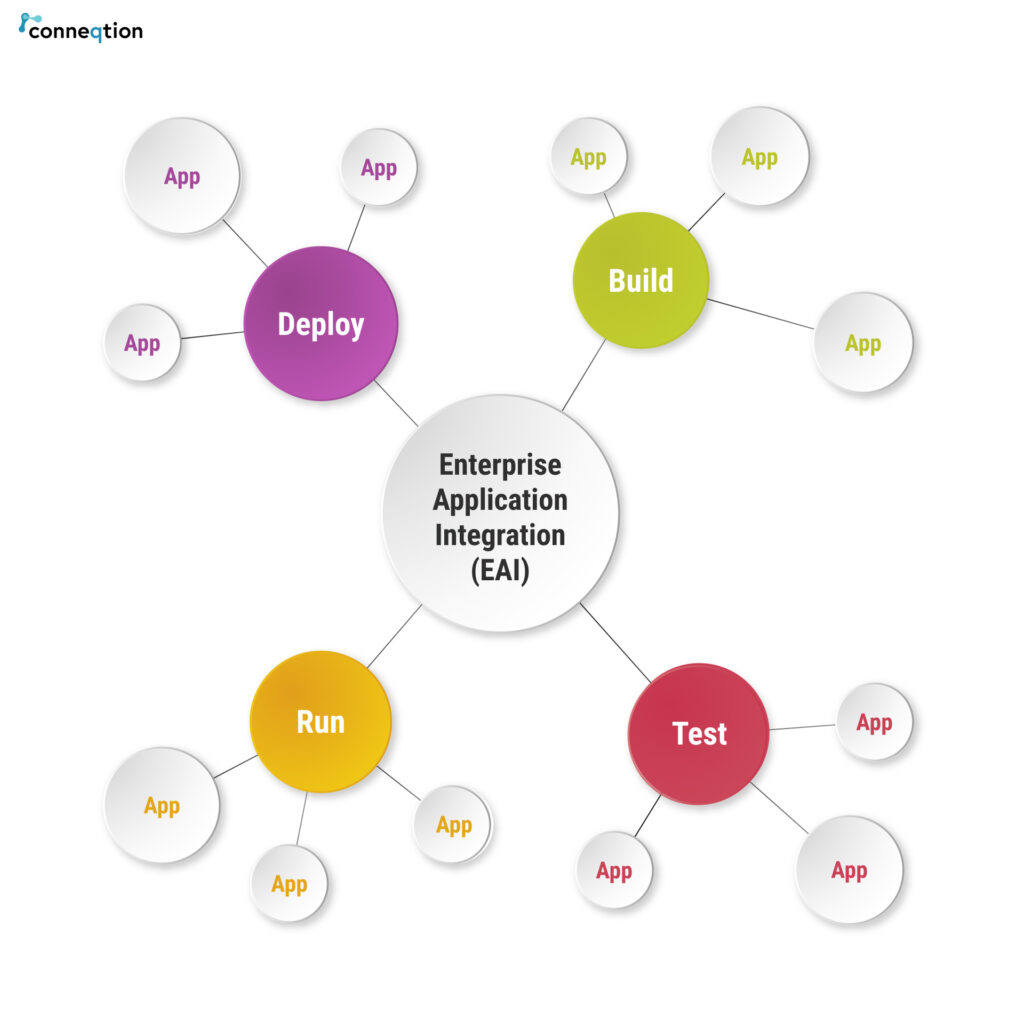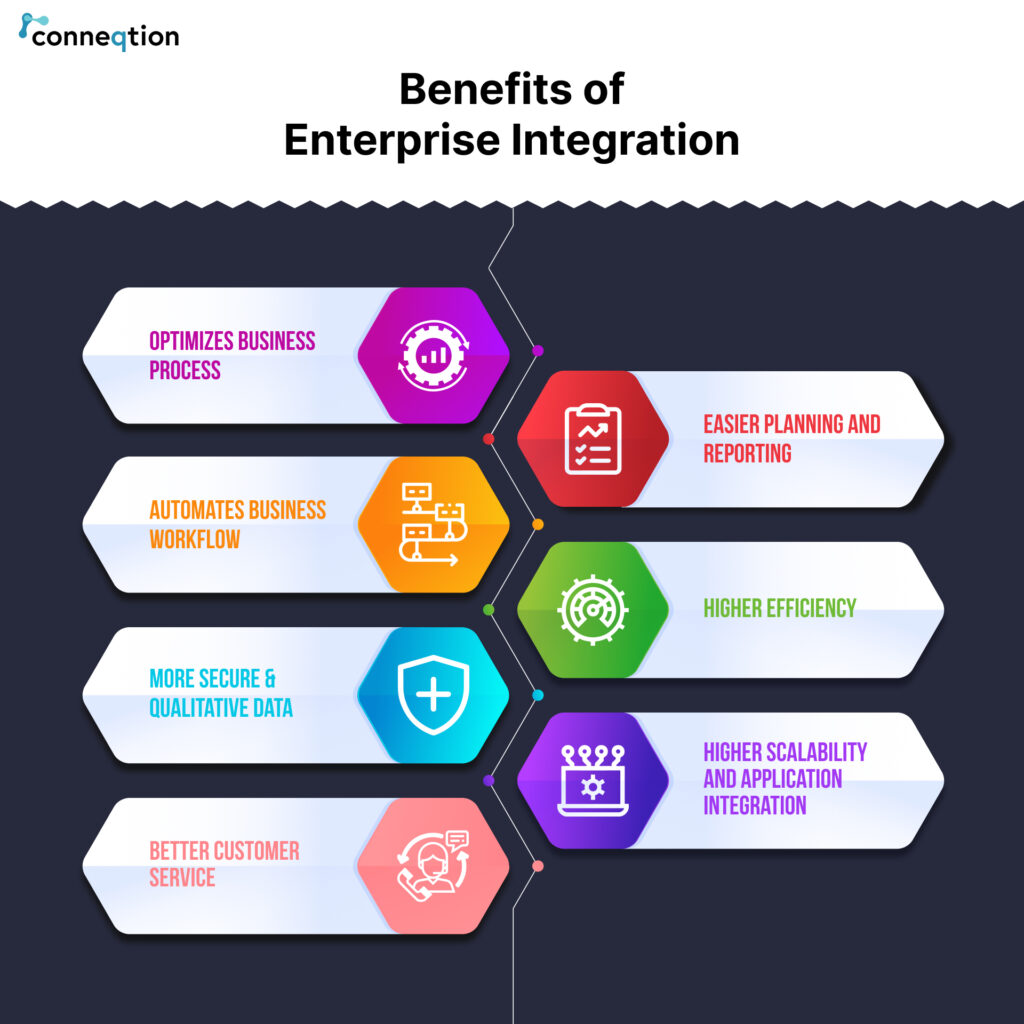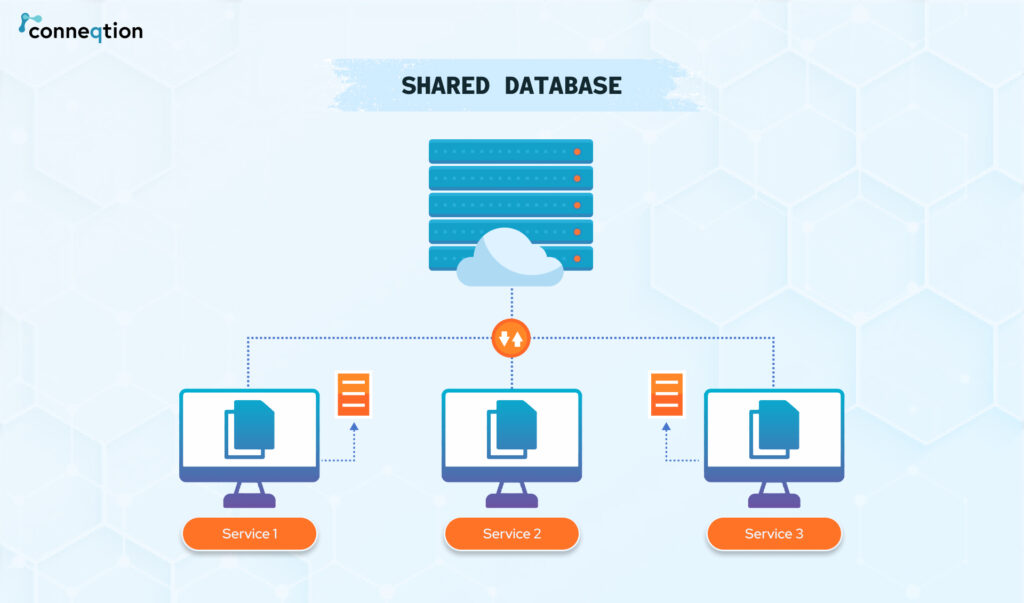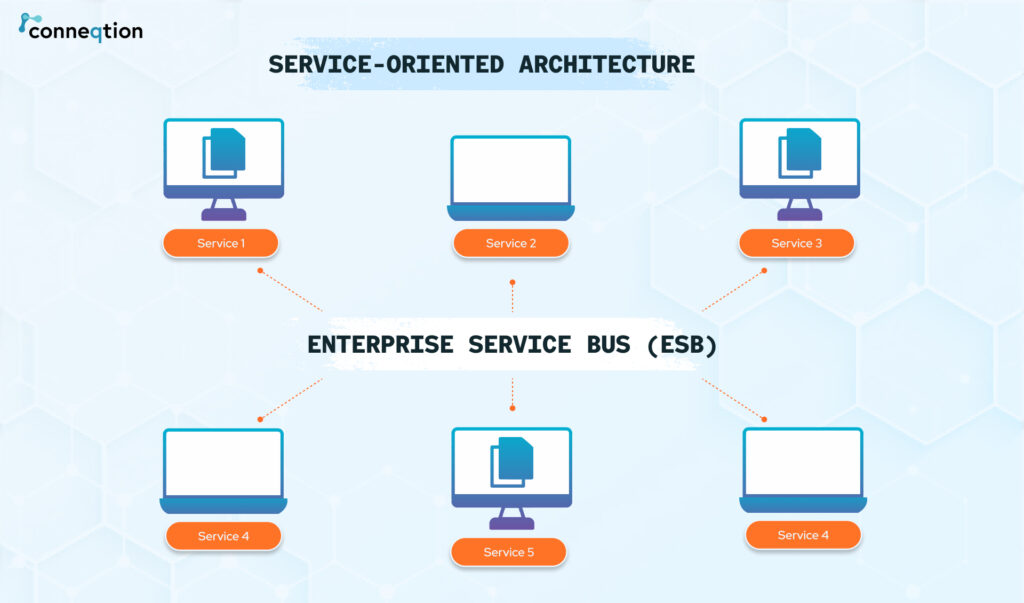The rise of the digital business landscape has helped in the evolution of the enterprise application. In the last few years, digital transformation has given a tremendous growth and helped in improving business revenue around the world. Adding to that, the monumental growth of the cloud has managed to shift the focus back to business critical data and applications.
There are few questions that need to be answered. Is there a loss in business process transparency? Are the current systems working at maximum potential? The answer to both the above questions can be answered by enterprise integration. It targets the seamless integration of crucial data and business applications.
In this blog, we will cover the intricacies of Enterprise Integration, the advantages and the core points that need to be taken into consideration.

Enterprise Integration Overview
In a nutshell, enterprise integration includes the process to leverage different types of integration methods to connect them as services. What is in it for the business? It is evident that this approach allows businesses to merge their core business processes seamlessly. Some of the major things that can be established using enterprise integration services:
- Merge different types of services.
- Application and data lifecycle management.
- Work with application features using API management.
Benefits of Enterprise Integration

What is one of the main reasons that enterprise integration is not considered? It is important to note the cost involved with integration, the need for management and the threat involved when considering enterprise integration cloud service.
Having said that, there are some amazing advantages of enterprise integration that can take your organization to the next level. Some of these advantages are:
Comprehensive Overview of the Organization
What is the best way to get a complete view of your organization’s practices? Integration is the answer to this question as it seamlessly merges different areas that impact your business including customer management, supply chain, development, resource management and more.
It is possible that a business might have different channels to interact with their customers. In that case, it is important to have a system where the entire communication is available to the whole team by integrating the customer relationship management and data analytics tool.
For example, think of a fast food joint with a dedicated order management system and a customer service system to manage order feedback and queries regarding orders. By seamless integration, the business can efficiently serve the customers better as they have their previous orders, frequently ordered items, average order amount etc.
Efficient Management
In this segment, we can take an example of a business that thrives on delivery of goods. This type of business relies heavily on proper inventory management so that the goods are stocked on time and the business doesn’t miss out on orders when the demand is high. The best option for this type of business is to integrate their inventory and order management systems for efficient management of demand and supply.
User Friendly System
More often than not, there is a high percentage of eros when there is frequent switching between different applications. Moreover, a lot of time and efforts are wasted which can be used in other productive tasks. For instance, by integrating the customer management tool with a document management tool, it gets easier for the customer service team to provide prompt service to the customers and enhance business productivity. This integration is of great assistance to the customer service team as they can find past records of the customer and also similar cases which helps improve the customer service.
Ability To Leverage Technology
With the help of enterprise data integration services, it is possible to leverage emerging technology including the likes of artificial intelligence and Internet of Things. These emerging technologies can be efficiently included with the current business processes to make the best use of these technologies for enhanced productivity and business operations.
How To Choose The Type Of Enterprise Integration?
Before getting to the point of Integration, it is a must to have a clear understanding of the type of integration that is required in the organization. It will be based on the organization’s future goals.
Same Data Across Multiple Applications
By leveraging seamless data integration, it is possible to have consistent data across different applications. This helps the organization to have applications that work independently but can access common data with other applications.
Same Function Across Different Applications
The second point is whether you want to have a feature that can be used for multiple applications. There are some operations that would require this, for example, payments. It is a good way to cut down application development related expenses with the help of components that can be used across applications.
Same Logic Across Different Applications
What happens if the same logic is to be used across multiple applications? By integrating the same logic it is possible to reduce development costs and make optimum use of existing technological investment.
If you are trying to focus on the above three pain points, it is best to take technical guidance from an experienced Oracle Integration Cloud Service partner.
Types of Communication Methods
There are three popular types of communication methods for integration which we will discuss in this blog as below:
Type 1: Shared Database
Shared database is one of the first methods that have been used to integrate different applications across a business. As discussed in pain point 1 above, these applications use a common database so that most of the data is reused internally. It is one of the most expensive types of integration and the cost can go up to a million dollars and is mostly used by large enterprises.

Advantages of Shared Database
- One of the most common advantages is the quality and consistency of data across multiple applications.
- This type of data sharing is swift due to the limitation of interfaces.
Disadvantages of Shared Database
- If there is a glitch in the database, it will hamper the functioning of all the applications.
- The complexity involved in a shared database is higher and hence the cost is higher.
- Risk of sharing data with third-party applications.
- It does not allow the use of available products like a CRM or ERP software.
Type 2: Service Oriented Architecture
The second type of integration method is to reuse REST or SOAP web services. Web services can be leveraged by alternate applications or systems. The cost for this type of integration is much lesser than the first type of integration (shared database). The most primary benefit of this integration relies on the reusability of services. Compared to the shared database, updates are easier in SOA and a reduced risk of exposing data to third-party applications.
In SOA integration, there are mainly two categories. We will discuss the advantages and disadvantages of both these types.
Point-to-point implementation
In this type of implementation, the communication between web services is straightforward.

Advantages of Point-to-point integration
- Ease of integration is a clear advantage as there are few services to link.
- By including an API, you can get increased flexibility.
- It is a cost efficient integration due to reduced complexity.
Disadvantages of Point-to-point integration
- Due to inefficient scalability, any new modifications will require modifications to the existing applications.
- Transfer of data needs to be transparent and consistent.
- With increasing services, the number of connections will increase and can be overwhelming to manage efficiently.
Enterprise Service Bus Integration
Compared to the point-to-point integration, this type of integration is managed using a common link. It is a bit more complex than the earlier type of integration because of the load on the integration server. The cost of this service also reflects this complexity. It is more expensive to implement ESB integration and can cost 5 to 15 times more than point-to-point integration.

Advantages of ESB
- There is a greater resilience to manage load efficiently.
- No access to unauthorized entities and hence provides better security.
- It is easier to scale and update as compared to the previous type of integration.
- Providing support is easier due to better visibility of the entire system.
Disadvantages of ESB
- Any issue in one of the links can cause a total breakdown in the entire system.
- Performance can be negatively impacted due to extra components.
- Cost is higher to acquire licensing for the system.
Type 3: Robotic Process Automation
In this type of integration, a robot will imitate user actions to transfer data between different applications. It is a highly efficient way to automate most of the business processes and hence the popularity of RPA has increased in recent times. Due to automation, the cost is reduced to a fraction of what a shared database can cost your business.

Advantages of RPA
- The best part of RPA – no requirement for duplication of human efforts (development).
- As the integration happens at the user level, there is no need for APIs.
- A typical RPA integration can be implemented in a few weeks.
- Increased return on investment reported by most businesses in the first year itself.
Disadvantages of RPA
- A common issue with RPA is the need to update all the changes individually, which increases the robot’s efforts.
- It is possible to implement RPA in a limited number of applications only.
Enterprise Integration – Final Thoughts
Enterprise integration is one of the best ways to manage your enterprise applications, get rid of data inconsistency and enhance overall business processes. However, integration can be a challenge for small or medium businesses just starting out on the journey as there is no clarity in requirements or even which applications to integrate. Moreover, it is important to think about the security of the system during the integration process. Conneqtion Group is an Oracle Partner that has been offering Enterprise Integration Services since the last two years. Contact us today to learn more about our integration experience and how we can meet your business requirements.

